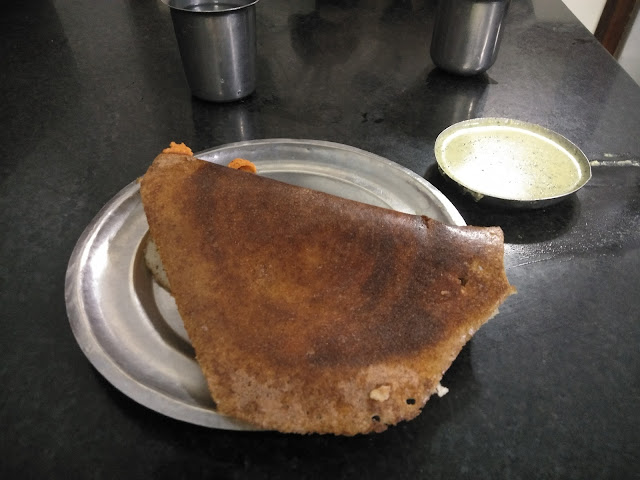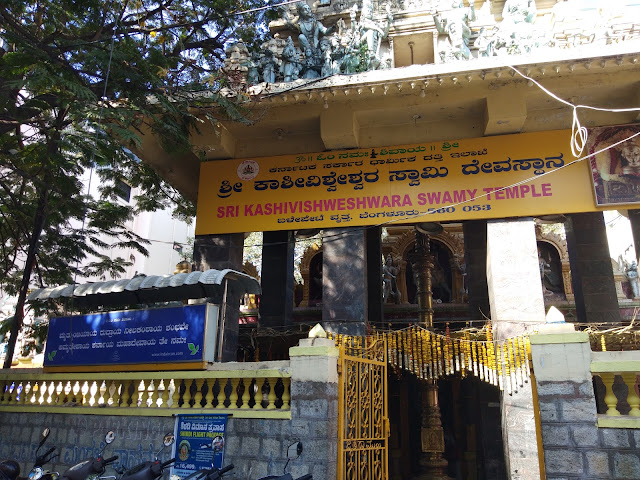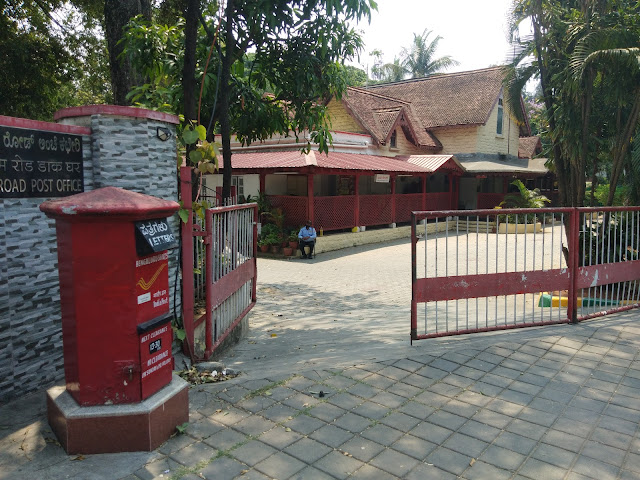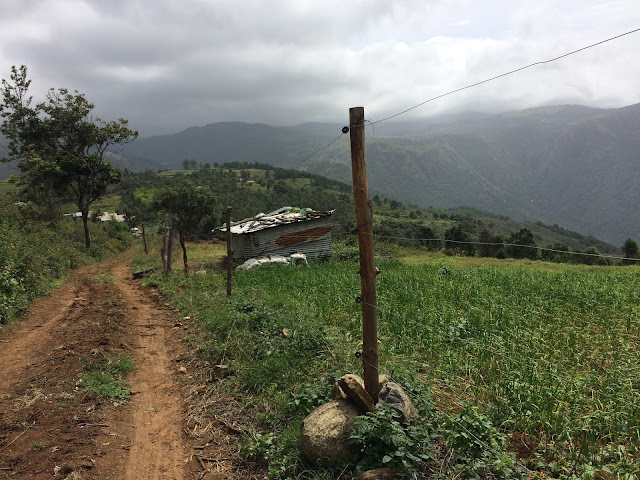Bengaluru Pete - A walk into the old world charm of Bangalore
“Pete” in Kannada means Market in English. This Pete area was established by Kempegowda during the 16th century. This area comprises of roads that are associated with various trades and trading communities. And each lane has been named behind the trades being pursued in those lanes/roads like Akkipete (rice street), Chikpete (small street), Doddapete(Avenue road), Balepete. For example : Balepete (Bale in Kannada means bangles in English) for bangles. You will find lot of shops in this lane selling bangles.
Apart from trading centers, you will also find some very old temples built during 19th century hidden inside tiny lanes of Pete area. Few have been renovated subsequently.
We started our walk from Shri Dharamaraya Swamy temple at 7 am in the morning.
Shri Dharamaraya Swamy temple
This temple is very famous for the annual Karaga festival held here. The moment you enter Dharamaraya Swample temple road, the tall majestic gopura just cannot be missed. The main deity is Draupada and it belongs to the Thigala community. Hence the road where this temple is located is called (Thigalarapete). In the fag corner of the temple, you can see a small pillar with a four faced figure on top. And a slab that looks like a hero-stone.
Shri Nagareshwara Swamy temple
As you walk around 100 steps ahead in this street, you will come across Shri Nageshwara Swamy temple. This temple belongs to the Nagaratha community which has been renovated in 1884. An interesting feature to be noticed in this temple is the Nandi Mandapam structure built similar to Kempegowda tower style.
Shri Ramalingeshwara Swamy Temple
This is also called as Makkala Basavanna temple. This is a 19th century structure fully renovated most of its devotees being the Kannada Devangas.

Shri Ranganatha Swamy Temple
This temple built during the 16th century is dedicated to Lord Ranganathaswamy and reflects the Vijayanagara style of architecture. There is an inscription in the temple premises dates 1628 in Telugu. I got to know about a unique feature of the temple – the central portion of the pillars can rotate without affecting the structure. Unfortunately in order to witness this, large influx of visitors resulted in frequent manipulation of this structure potentially leading to damage. To prevent such incidents, it has been sealed with cement now.
Shri Tuppada Anjaneya Swamy Devashtana
Tuppa in Kannada means ghee in English. The name of the temple is linked to the ghee lamps that have been burning continuously 24 hours a day 7 days a week for around last 400 years.
Strange sinking stone at the temple entrance. People consider the deity Lord Hanuman is very powerful and fulfills all their wishes. Hence they offer to donate ghee to the deity.
We continued walking along the streets of the Pete area.
Bisilu Maramma Temple
Bisilu in Kannada means Sunlight in English. This is located in the main street of Avenue road with shops on either sides and there is no covering. Every passerby can just stop and pray.
Shri Kaikamba Kamateshwaraswamy temple (Nagarathpete)
This was originally founded by the Vishwakarmas. This is quite a large temple with a considerably huge and beautiful Nandi. This temple stylistically built also dates back to 19th Century. The central shrine hosts the deity of Shri Kalikamba and the Kamateshwara Linga.
Mohan Buildings
Nestled quaintly between the busy market area is this old building dating back to 1909. This first floor of this building used to be a court hall which lies abandoned now. Hence the road is also named as Old Taluk Kacheri Road. The architecture is striking and reminds you of the old colonial era.
In this lane, we could see lot of advocate houses and offices still retaining the old world charm.
While walking we came across a Sanksrit and Veda Pathashala.
Shri Vithoba Panduranga Temple (built by the Marathas)
This temple is located at the B.V.K. Iyengar cross road owned by the Swakulasali community(Marathi speaking weavers).
Bale Garudi
This is an institution of Indian style Wrestling nestled in the side by-lane of Balepete.
Shri Shrinivasa Mandira
This temple is located at the heart of Balepete and Lord Venkateshwara is the main deity. There are interesting wall arts around the temple which will quickly grab your attention as you enter.
Shri Sugreeva Venkataramana Swamy Devasthana
Right opposite to the Srinivasa temple is Sugreeva Venkataramana Swamy temple. This 400 year old temple is dedicated to Vanara King Sugreeva and Vaali. This temple is built in Vijayanagara style and must be an early 19th century creation. The main temple houses Venkataramana with Sridevi and Bhudevi on either sides.
Next we had breakfast in Udupi Sri Krishna Bhavan which is located right next to this temple. This also seems to be very old just like the temples of this area. It was established way back in 1926 CE and still retains the old world charm. We ordered idli and dosa here and food was good.
Sri Kashi Vishweshwara Swamy Temple
This temple is located at the fag end of Balepete and the huge gopuram just cant be missed. It’s a large temple complex with beautiful stone sculptures of various deities. You can even find Mahishasuramardini as you take parikrama of the main deity. In the same complex, you will also find Kedarnath temple.
Then we started walking Tulasi Tota Main road which was the last leg of our walk.
Shri Prasanna Krishna Swamy Temple
This temple is famously known as Kalyanapuri in Bangalore and was founded in year 1884 during the rulers of Mysore. This temple has a lovely Kalyani (Temple tank) with the typical red and white color. This temple hosts the deities of Krishna and Rukmini as the main deities.
Chikka Lalbagh, Tulasi Tota
This was the area having formerly irrigated parks and fields from Dharmambudhi.
This was the last point of our walk. The Nadaprabhu Kempegowda metro station (Majestic) is right opposite to this Chikka Lalbagh. So we hopped onto our trains for our journey back home.
The entire walk took around 3 hours. Parking is a big issue here due to the tiny lanes and lot of one-ways. So if you are planning for this walk, would suggest taking the metro or BMTC bus. Also please plan to explore this during the early morning hours. Because once the traders start setting up their shops and shoppers start crowing these markets, then wading through this area is really very tough. But its totally worth of a half day exploration to soak into the old world charm of Namma Bengaluru.













































































Informative 👍🏻. Adding a route map would be a good addition that you can consider
ReplyDeleteGreat information Smita
ReplyDelete